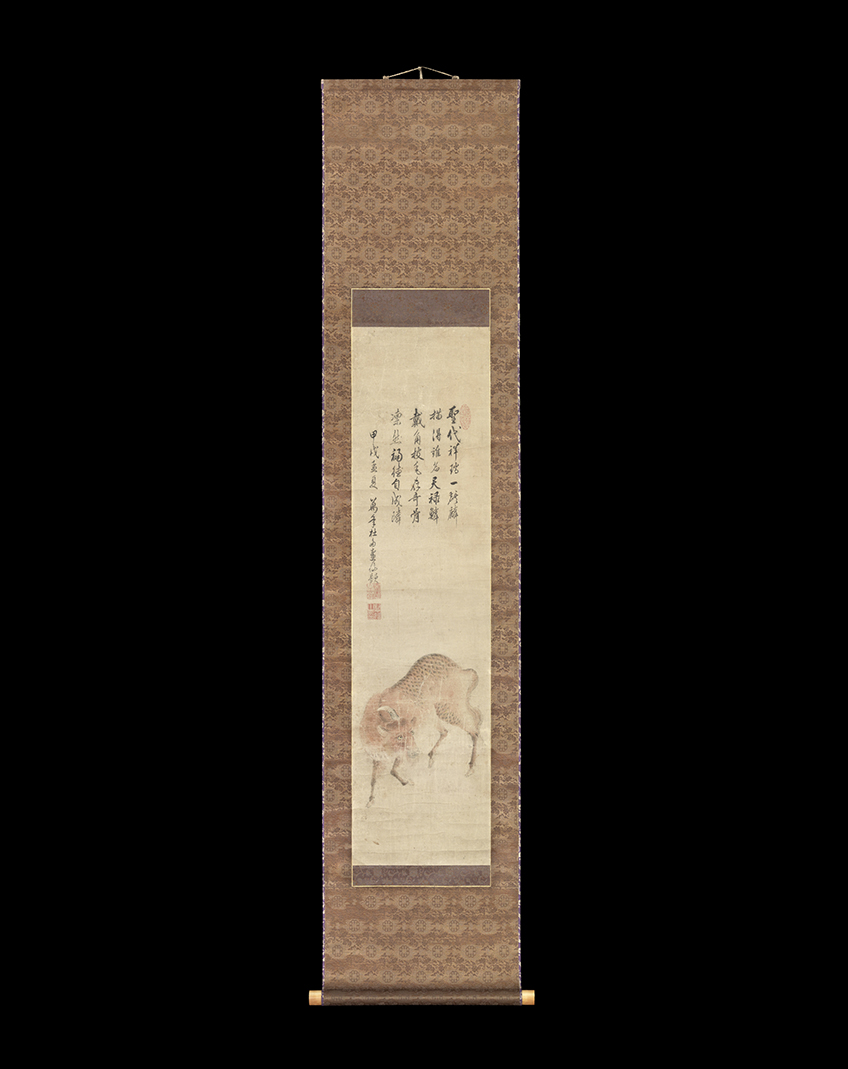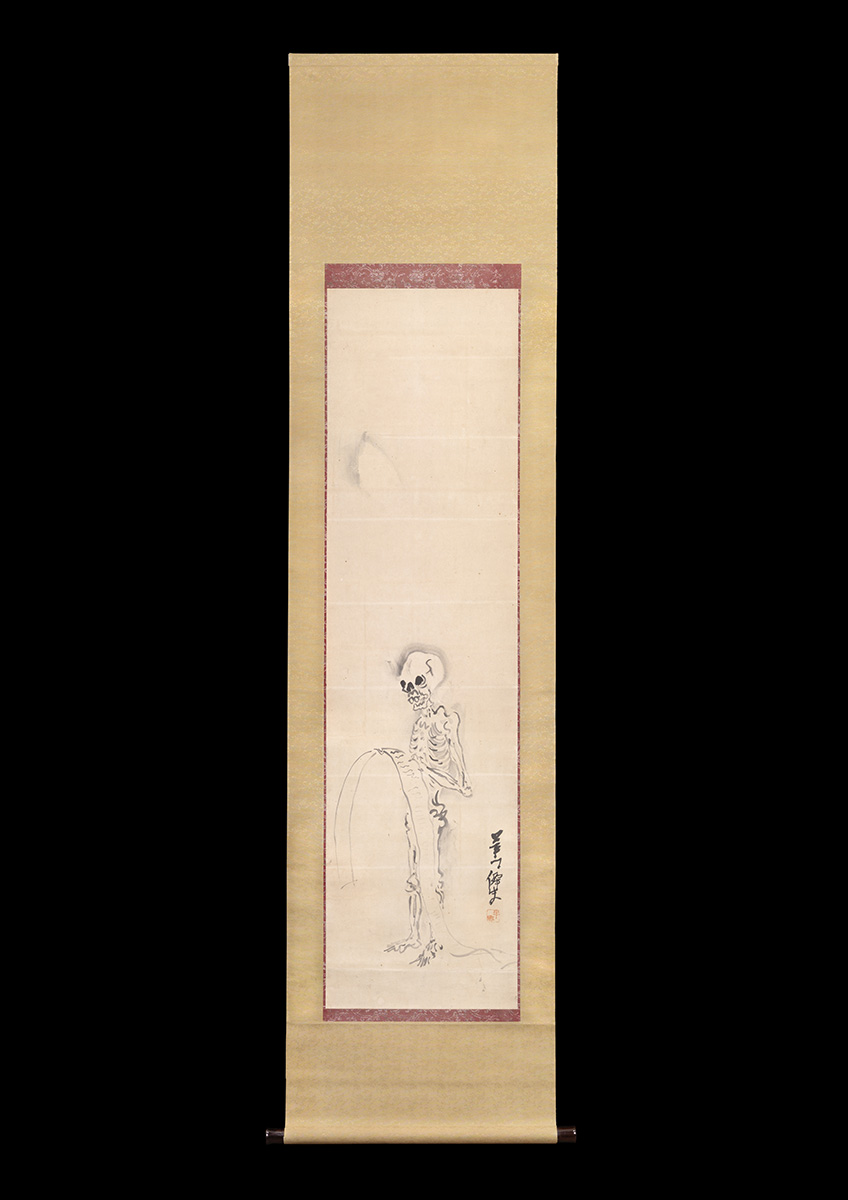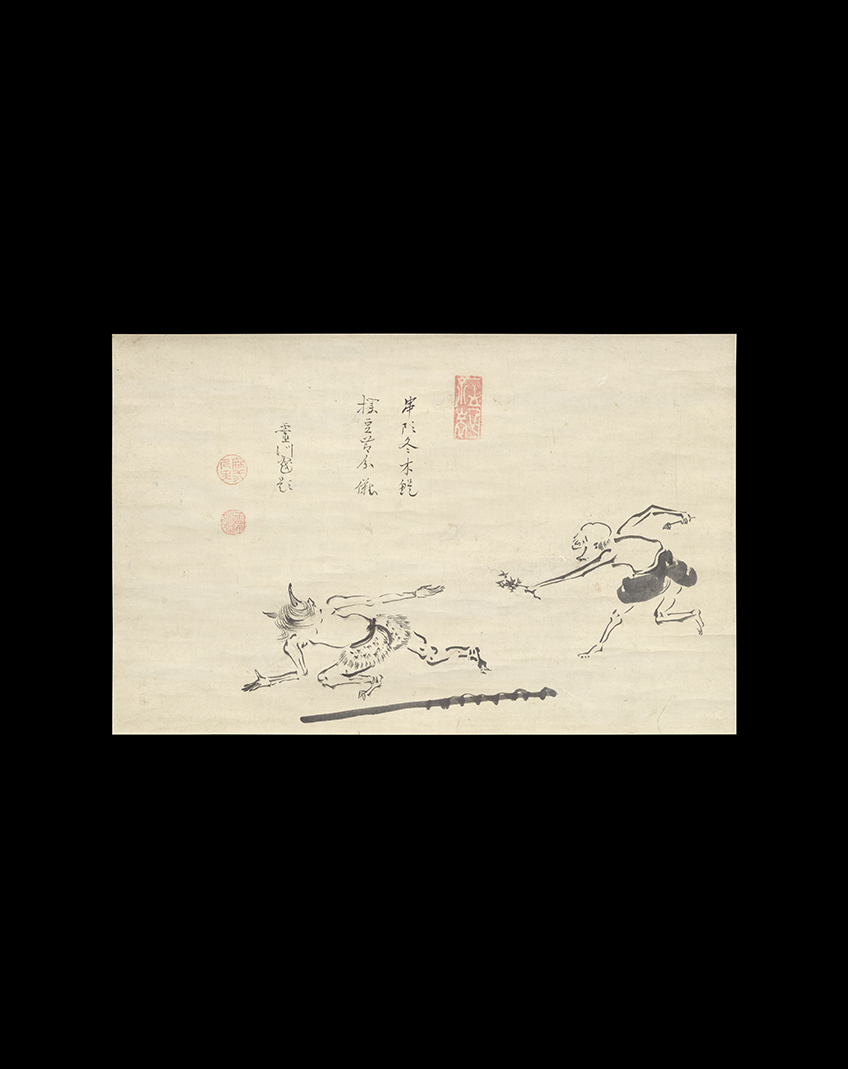Unicorn
Paintings
- Contact Us
-
Material
Scroll, ink and colour on paper, mounting on silk
-
Size
94 (h) x 28.5 cm (161 (h) x 41.2 cm)
-
Period
Edo period, dated 1814 (Bunka 11)
-
Published
"Supranatural" by Galerie Mingei
Description
Kirin – Unicorn
Artist: Gasen (unknown painter)
The Kirin is an imaginary animal, and one of four sacred creatures in China. It has the head of a dragon, the body of a deer, legs and hooves similar to those of a horse, and the tail of a lion. Its single, distinctive horn links it to the unicorn. The kirin is considered a paragon of virtue. During the Edo period, the Kirin was said to appear only when a virtuous and righteous ruler and government were in power.
The painting is signed and dated: 甲戌孟暑 萬年杜多畫仙題 – “Kōjutsu (kinoe-inu) mōsho, Mannen-zu, Gasen dai” which means “Inscribed by Gasen, studio name Mannen-zu, in the mid-summer of the year of kojutsu (1814, 11th year of Bunka)". The name Gasen literally means “Painting Immortal” and the studio name Mannen-zu literally means “Forest of One Million Years”.
A dedication is written on this scroll, with an explanation of the kirin in Chinese.
聖代祥瑞一麒麟 Kirin is a divine and auspicious creature
描得誰名天禄鱗 It has scales on its body
戴角被毛存奇骨 It is a peculiar creature with a horn on its head and hair
凛然福徳自成隣 Gallant and virtuous
The following inscription appears on the back:
“The Kirin is an old and rare mythical creature which is also known as Tianlu (“Heaven and Virtue”). It is said to have emerged in China during the Yuan Dynasty. The year of tsuchinoe-tora (tiger), 15th year of Bunka (1st year of Bunsei, 1818).”


